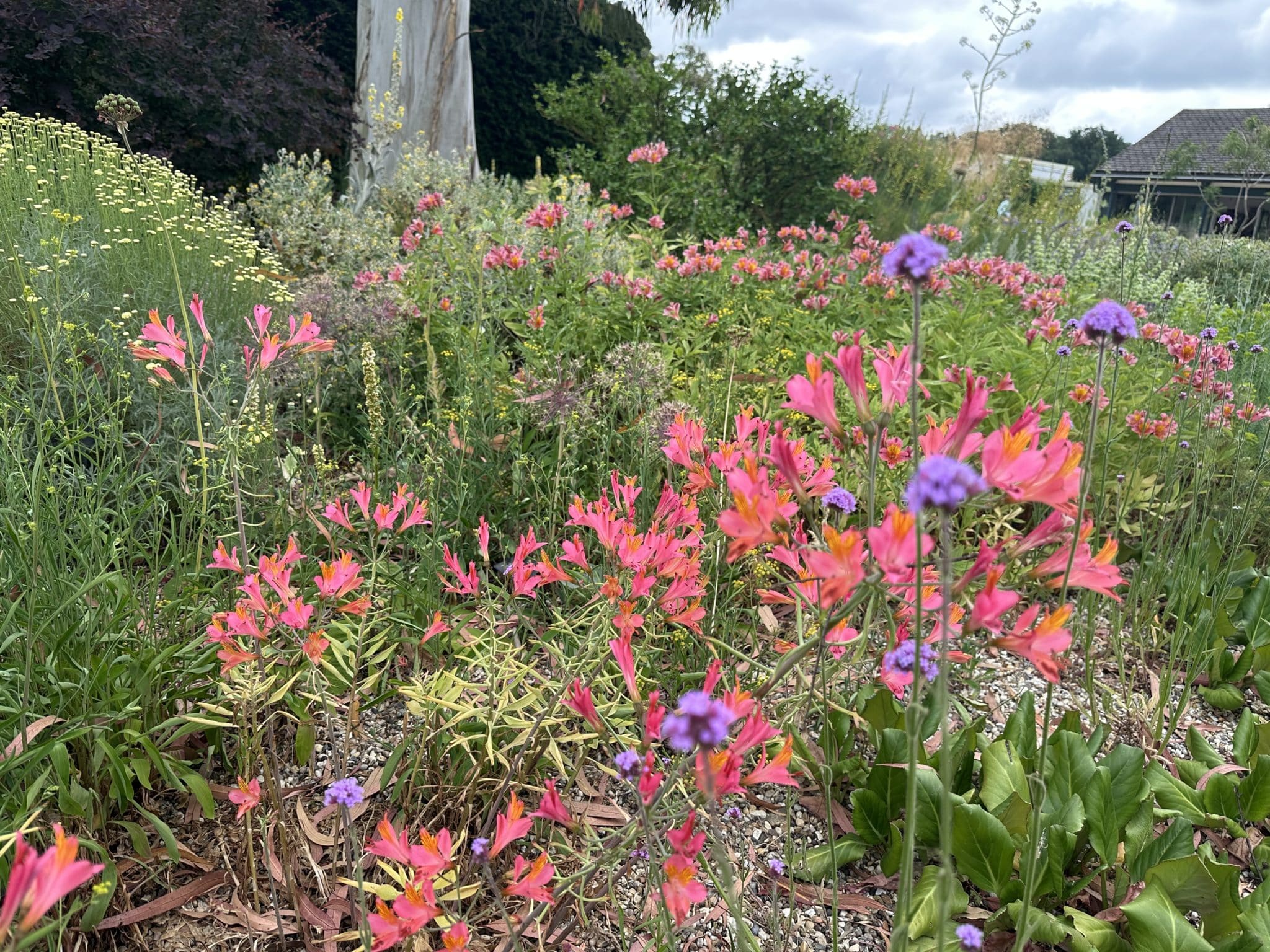With heatwaves and hosepipe bans becoming more and more frequent, Tim Sykes of Gardenproud reveals why drought-tolerant gardens could be the way forward…
After the severe drought of last summer and the heatwaves happening this summer, plus the hosepipe ban, all garden lovers must be wondering how on earth their precious outdoor spaces are going to survive.
Common sense would suggest we should be thinking about alternative planting strategies and low-pressure watering systems.
That’s why I believe the late and legendary Beth Chatto’s Gravel Garden (described also as a dry garden) at Elmstead Market, near Colchester in Essex is an inspiration.
This is perhaps Beth’s most well-known garden. Interestingly it began as an experiment and has never been watered since its creation. Despite it being situated in one of the driest parts of the country and having poor, free-draining soil, this former car park has become renowned for its spectacular display of drought-tolerant plants.
Amazingly the garden is only irrigated by natural sources. This may seem extreme, but the garden, which was created in 1992, and the strategy of careful soil preparation, heavy mulching, then utilisation of gravel as a surface mulch, all combined with drought tolerant plants, has obviously worked.
We recently visited the garden and the photographs on this page are testimony to Beth’s research and the subsequent team’s exceptional care and attention that goes into its remarkable presentation and upkeep.
Good soil preparation is key
When creating the gravel garden the soil and subsoil needed breaking up and turning over to a reasonable depth. This allowed penetration of rain and a good root system.
The Beth Chatto team mixed in plenty of good compost to two spades’ depth. This was designed to help conserve moisture, especially at the plant establishment phase. The ground was then allowed to settle before planting.
When planting, each plant was given a really good soaking in a bucket of water before planting. Then when planted the areas were well-watered with a hose.
Beth chose not to apply any mulch in the first year since she knew that fresh fluffed-up soil incorporating compost tends to encourage weeds. Instead she chose to hoe the soil in the first season and remove any weeds.
In the following season a mulch of 12mm gravel was spread between the plants to a depth of 25-50mm, depending on the type and height of plants. So obviously a thinner mulch would be used for shorter plants etc.
The close planting, combined with gravel mulch, helps reduce the subsequent weeding. It also reflects sunlight and keeps the soil below cooler and thus more likely to retain moisture longer.
Choose drought-tolerant plants
If you’re thinking about adopting a drought-resistant garden then consider a range of plants that will give you interest throughout spring, summer and winter. A balanced design that incorporates bulbs, perennials and shrubs. This will give you shape, texture and colour in your borders.
Drought-tolerant plants you might include in a scheme:
- Lavandula angustifolia
- Lespedeza bicolor
- Euphorbia characias subsp. wulfenii
- Sternbergia lutea
- Arum creticum
- Phyla nodiflora
- Sedum spectabile “Iceberg”
- Phuopsis stylosa
- Helichrysum hypoleucum
- Yucca gloriosa
- Alstroemeria ligtu hybrids
- Hebe “Red Edge”
- Cotoneaster franchetii
- Helleborus argutifolius
- Spiraea japonica “Bullata”
- Codonopsis Clematidea
- Nigella damascena “Miss Jekyll Alba”
- Helianthemum “Rhodanthe Craneum”
- Acanthus dioscoridis var. perringii
- Iphelion uniflorum
- Origanum vulgare “Aureum”
For more advice and information see Beth Chatto’s book “Drought-Resistant Planting” published by Frances Lincoln 2016.
Beth Chatto’s Gardens and Nursery are open to the public on selected days throughout the year. It’s well worth a visit!
For full details go to: bethchatto.co.uk








